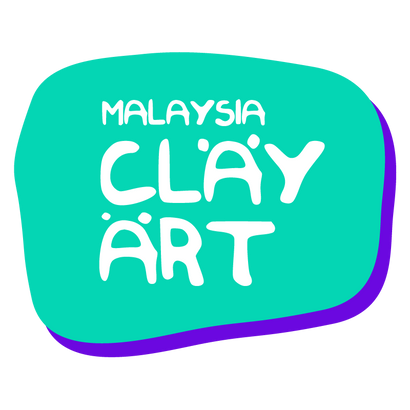Malaysian customers, please select Bank Transfer. PayPal transactions incur a 4.4% fee plus RM2.
Malaysian customers, please select Bank Transfer. PayPal transactions incur a 4.4% fee plus RM2.
Start here
RBT Subjects in Tingkatan 1, 2, and 3 - Step-by-Step Overview
November 15, 2024 3 min read

Are you curious about what RBT (Reka Bentuk dan Teknologi) in Malaysian secondary schools entails? This subject, introduced under the Kurikulum Standard Sekolah Menengah (KSSM), is designed to equip students with practical skills in design, technology, and problem-solving. From Tingkatan 1 to Tingkatan 3, students build on these foundations to gain hands-on experience that prepares them for future careers. This guide provides a step-by-step overview of RBT content in each level, helping parents, students, and educators understand what to expect.
Tingkatan 1: Introduction to RBT
In Tingkatan 1, RBT is all about introducing students to the fundamentals of design and technology. The focus is on building a foundation in understanding basic concepts, developing essential skills, and exploring the design process.
Key Topics Covered:
-
Introduction to Design and Technology
- Basics of design thinking, technology’s role in society, and understanding how innovation improves lives.
-
Project Management Skills
- Introduction to planning and organizing simple projects, setting goals, and managing time effectively.
-
The Design Process
- Learning the phases of the design process: ideation, research, planning, creating, and evaluating.
-
Basic Sketching and Drawing
- Developing fundamental drawing skills to visually communicate ideas through sketches and simple technical drawings.
-
Application of Technology
- Practical exercises using simple tools and materials to create prototypes, emphasizing creativity and innovation.
By the end of Tingkatan 1, students have a solid foundation in design and problem-solving skills and are prepared for more advanced projects.

Tingkatan 2: Intermediate Skills in Design and Technology
Building on what they learned in Tingkatan 1, Tingkatan 2 students dive deeper into design and technology, taking on more complex projects and learning to use additional tools.
Key Topics Covered:
-
Advanced Project Management
- Managing larger projects with multiple steps, focusing on resource allocation, teamwork, and scheduling.
-
Enhanced Design Process
- Detailed research and analysis in the design phase, including testing and refining ideas through feedback.
-
Technical Drawing and Computer-Aided Design (CAD)
- Developing precise technical drawings and an introduction to CAD software to design more complex objects.
-
Material Science
- Understanding the properties of various materials, such as metals, plastics, and textiles, and choosing materials based on project needs.
-
Introduction to Electronics and Simple Programming
- Basics of electronic circuits, components, and simple programming concepts to build interactive projects.
Tingkatan 2 students take on more responsibility in managing projects and begin integrating electronics and programming, enhancing their technical and creative capabilities.
Tingkatan 3: Advanced Applications and Innovation
In Tingkatan 3, students tackle more complex projects, integrating multiple skills and taking on real-world challenges. The curriculum emphasizes problem-solving, critical thinking, and preparing students for potential career paths.
Key Topics Covered:
-
Comprehensive Project Management
- Planning and executing sophisticated projects from start to finish, learning project documentation and evaluation methods.
-
Innovative Design Solutions
- Developing solutions for real-world issues, encouraging sustainable design and addressing user needs.
-
Advanced CAD and 3D Prototyping
- Mastery of CAD software for intricate designs, and using 3D printing and other technologies to create physical models.
-
Integration of Electronics and Mechanics
- Designing functional electronic and mechanical systems, incorporating microcontrollers, sensors, and motors for automation.
-
Entrepreneurship in Design
- Basics of product marketing, intellectual property, and understanding how design and business intersect.
By the end of Tingkatan 3, students have developed advanced skills in design, technology, and entrepreneurship, preparing them for future studies or careers in STEM fields.
Conclusion
RBT in Tingkatan 1 to 3 provides a structured approach to learning design and technology. By developing essential skills in creativity, problem-solving, and technical knowledge, students gain hands-on experience that prepares them for an evolving world. This subject not only empowers students to think critically but also fosters innovation, encouraging them to explore future opportunities in design, engineering, and technology.
Leave a comment
Comments will be approved before showing up.
Also in Let's Get Creative

How to Heat Shrink Wrap Oddly Shaped Items Perfectly (Step-by-Step Guide)
April 04, 2025 2 min read
Read More
Heat Shrink Wrap in the Food Industry: Ensuring Freshness and Safety
March 10, 2025 3 min read
Read More
How to Select the Right Heat Shrink Band Size for Your Glass Jars and Bottles
February 28, 2025 3 min read
Recent Articles
- How to Heat Shrink Wrap Oddly Shaped Items Perfectly (Step-by-Step Guide)
- Heat Shrink Wrap in the Food Industry: Ensuring Freshness and Safety
- How to Select the Right Heat Shrink Band Size for Your Glass Jars and Bottles
- Celebrate Your Birthday Party with a Craft Workshop
- Is Heat Shrink Wrap Food Safe? Everything You Need to Know
- Can You Use a Hair Dryer for Heat Shrink Wrapping? Pros, Cons, and Best Practices
- How to Market and Sell Your Handmade Crafts for Maximum Profit in Malaysia
- From Hobby to Business: A Complete Guide to Financial Planning for Starting a Profitable Handmade Craft Business in Malaysia
- Why Investing in Quality Clay Saves You More Money in the Long Run
- The Art of Chinese New Year Calligraphy - How to Appreciate and Display It
Join Our WhatsApp Channel!
Subscribe now to get the latest updates on sales, promotions, new releases, and FREE tutorials!
**Get an exclusive discount on your first purchase when you join!**

HELLO THERE!
🚀 RECEIVE 10% OFF YOUR FIRST ORDER.
JOIN OUR WHATSAPP CHANNEL TO CLAIM YOUR DISCOUNT CODE 📢

